Green Building Community
Remote Hood Exhaust Fan Retrofit Delivers Significant Noise Reduction
Posted by: Allison Friedman // Rate It Green Admin
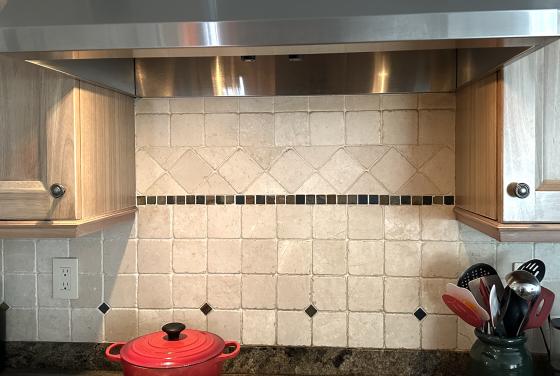
Sometimes, a smaller targeted project can be the best project! I am excited to report that we just completed a retrofit to install a remote hood fan for our kitchen exhaust hood, and it instantly made such a big difference. We reduced the noise of our hood fan significantly, by twenty decibels, and everyone in the family is already more comfortable using this hood, where in the past they complained, resisted, or just didn't use it at all. And given that I know a bit about indoor air quality (IAQ) and associated health risks, it was really upsetting to me that I could not get people to use the hood without a lot of begging.
Read about our experience below, and also check out the video about this project! See if you can hear the diffrence in fan noise, but we've also got photos and videos to help as well. Keep in mind - decibel levels are exponential. That means, our change is more significant than it sounds. We can definitely hear and feel the difference!
Exhaust fans in kitchens are a critical part of ventilation strategies to ensure good Indoor air quality, or IAQ. All cooking is a chemical reaction, where we know there will be some emissions of chemicals and particles. It's important to remove these pollutants from the air, especially in concentrated areas where more pollutants are generated space, as in kitchens and bathrooms. But where a gas stove is present, it's particularly important to remove the added fossil fuel emissions, which can include carbon monoxide, formaldehyde, nitrogen oxides, volatile organic compounds, and fine particulate matter (PM). Natural gas cooking causes or worsens a range of health problems from short-term health effects to long-term respiratory and other diseases. We know from multiple studies now, for example, that childhood and long-term asthma rates are higher in homes where children lived and gas stoves were present.
The thing is, no one wanted to use this fan! Maybe they didn't quite believe the health risks. I mean, they know from experience that other people also don't always make sure to use their fans, so how big of a deal could it be? They didn't quite think the health risks could be as bad as I suggested. That's a challenge with air quality - it's not something people can always smell and perceive, when there isn't a direct and observable condition or immediate and known health consequence.
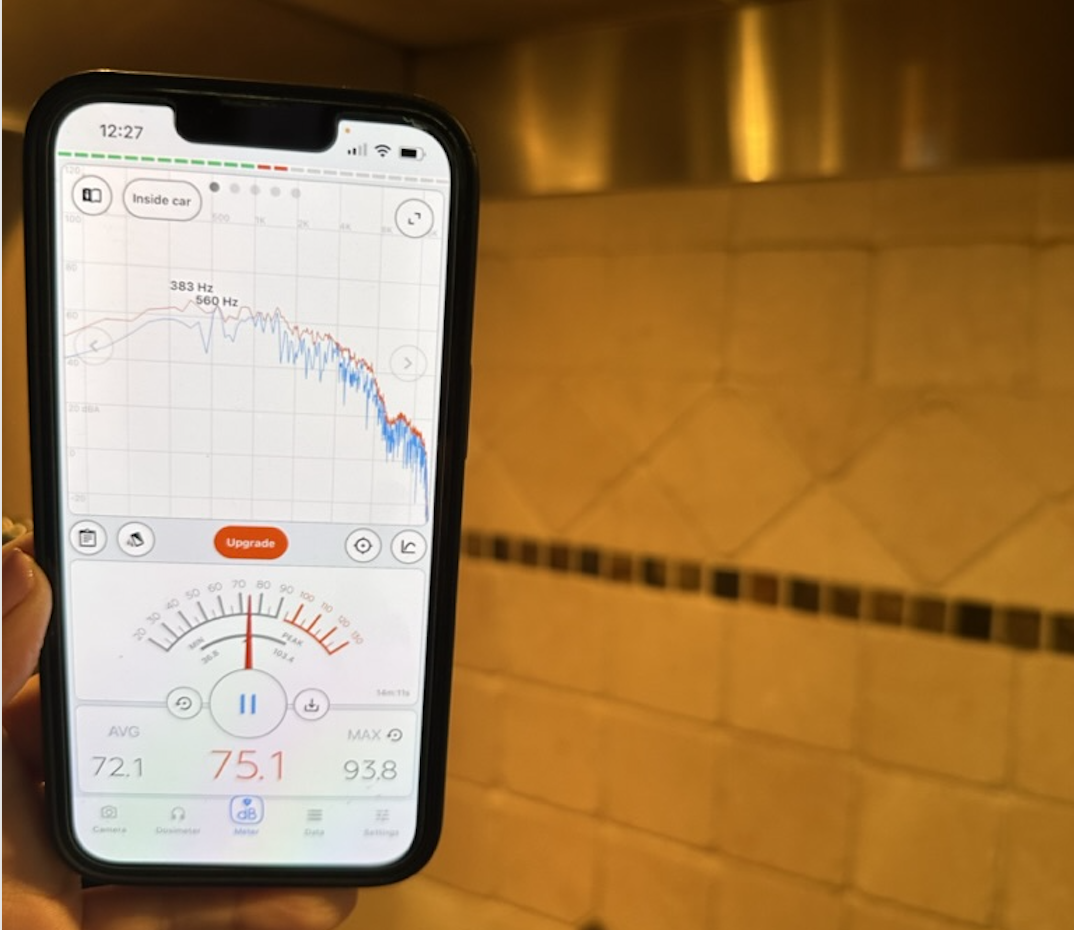
Prior to the project, the hood measured 75 dBA at its highest setting.
Also, this fan was loud, so they just found it too irritating and didn't want to use it. But that turns out to be a problem I could solve. Before the project, I measured the fan noise at 75 decibels on high, and 70 on low. A normal conversation is about 60 decibels, and while 70 doesn't then seem so much more, it is because decibel levels are exponential. At 85 decibels and higher, there's a very real risk of harm, particularly with long exposures. 70 decibels is irritating, which I know from personal experience! Long exposures over 70 can also cause harm.
Our fan was indeed annoying. It's also 17 years old. No one was using it no matter how much I begged, except a family member just admitted he used it when I was around so that he "wouldn't get caught not using it." I thought we had to get a new fan as I know that new fans are much quieter, and I was worried about basically landfilling something that shouldn't be waste. Fortunately, we were in the middle of a fairly major HVAC project (we're installing VRF heat pumps!), and after hearing my angst about this hood, our HVAC professional mentioned I could just get a new fan instead of replacing the whole hood. This may seem silly to some but I had no idea this was possible. (Meanwhile, I have sourced an apparently rare small oven part to keep my perfectly otherwise fine oven, so I don't know why this didn't occur to me! Perhaps that was one hope when I mentioned this to our contractor - so don't be afraid to express your concerns and ask questions!)
You mght not hear the levels perfeclty in a video, though I think the difference in the "before and after" is actually noticeable, but I admit that this fan was loud. The kids complained, and you really couldn't have a great conversation in the kitchen. To keep perspective, here are some sample noise levels:
- Breathing is about10 decibels, or dBA
- Whispering is about 30 dBA
- Normal conversation: 60-70 dBA
- Refrigerator 50 dBA
- Above 75 dBA is considered a loud washing machine
- Doorbell 80 dBA
- Blender 80-90 dBA
- Lawnmowers: 80 to 100 dBA
- Vacuum 85 to 90
- Subway 90-115
- Motorcycle 95 dBA
- Sports events: 95 to 110 dBA
- Car horn 110
- Rock concert 110-120
- Sirens from emergency vehicles: 110 to 129 dBA
- Airplane at ramp 120
- Fireworks: 140 to 160 dBA (at 3 feet)
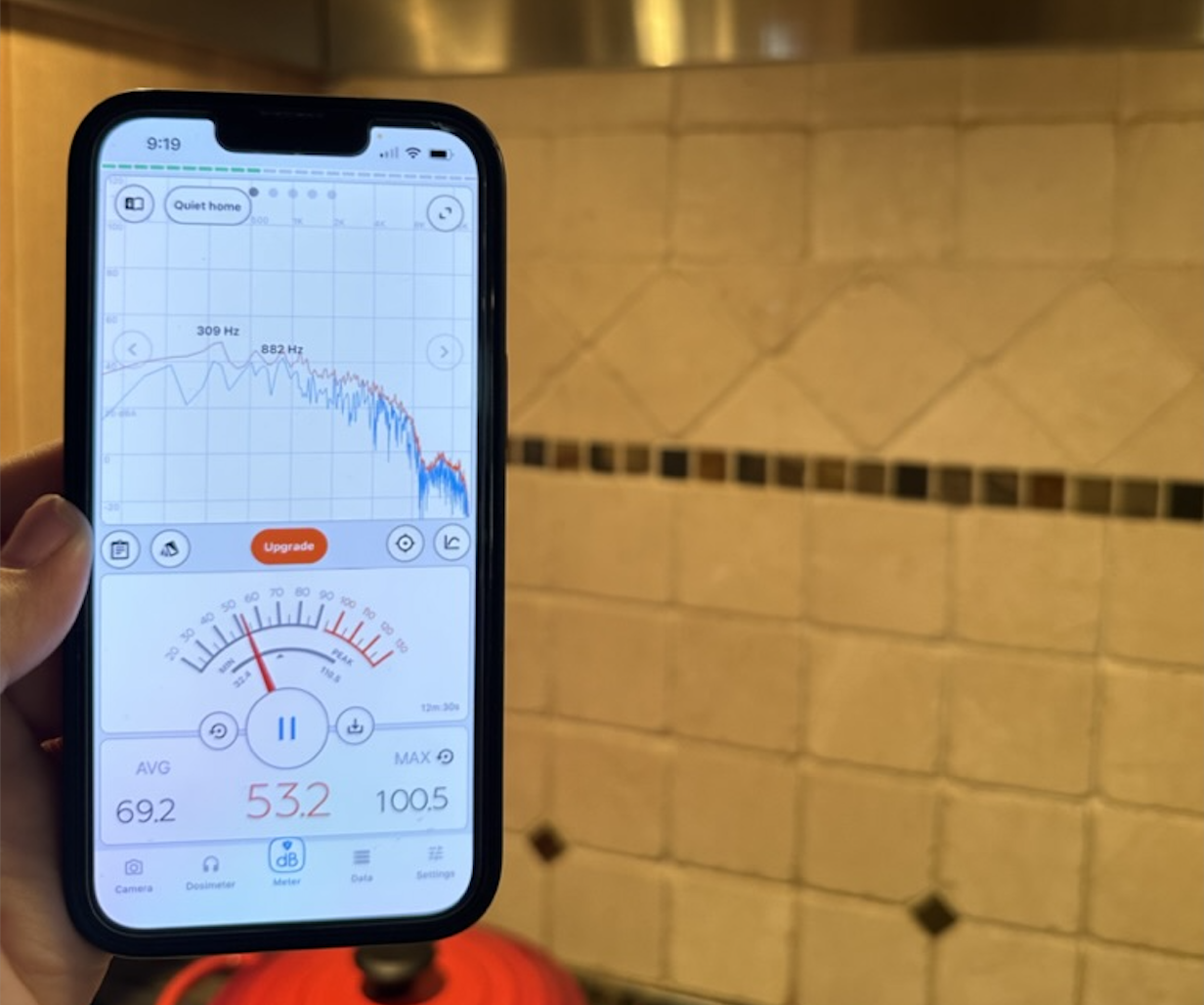
After the remote fan was installed, the hood measured 20dBA lower, at around 55 dBA. This is a significant difference. A normal conversation is now easy, where it wasn't really possible before.
I am so excited about this change, because it just makes the experience so pleasant that it's instantly clear we can change behavior. A family member who never wanted to use the hood has now accidentally left it on three times in the first two weeks since the installation!
I hope this experience will inspire others to consider this type of project. Please feel welcome to connect and to ask questions! Please share your stories of similar projects, where you were able to achieve an impact in a way you didn't expect, or you achieved health and comfort win-wins that will make a real difference and that overcome some obstacles. in this case, we had a real win-win!
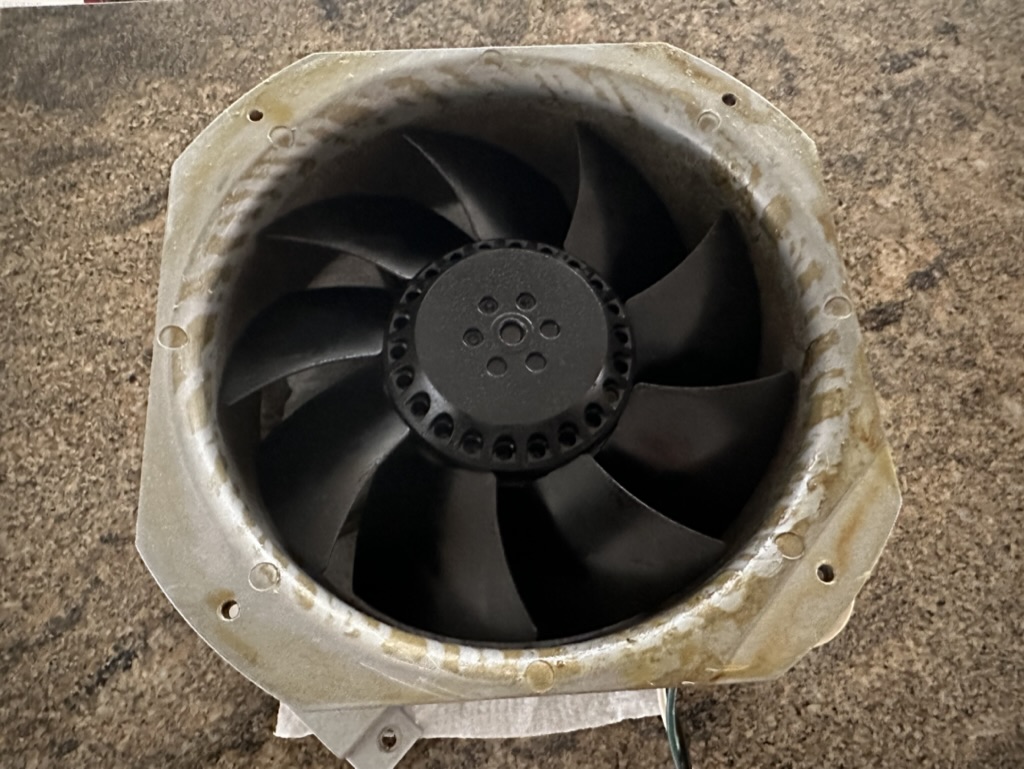
This is our old hood fan. Though the new one is bigger, this looks like a bit of a monster to me!
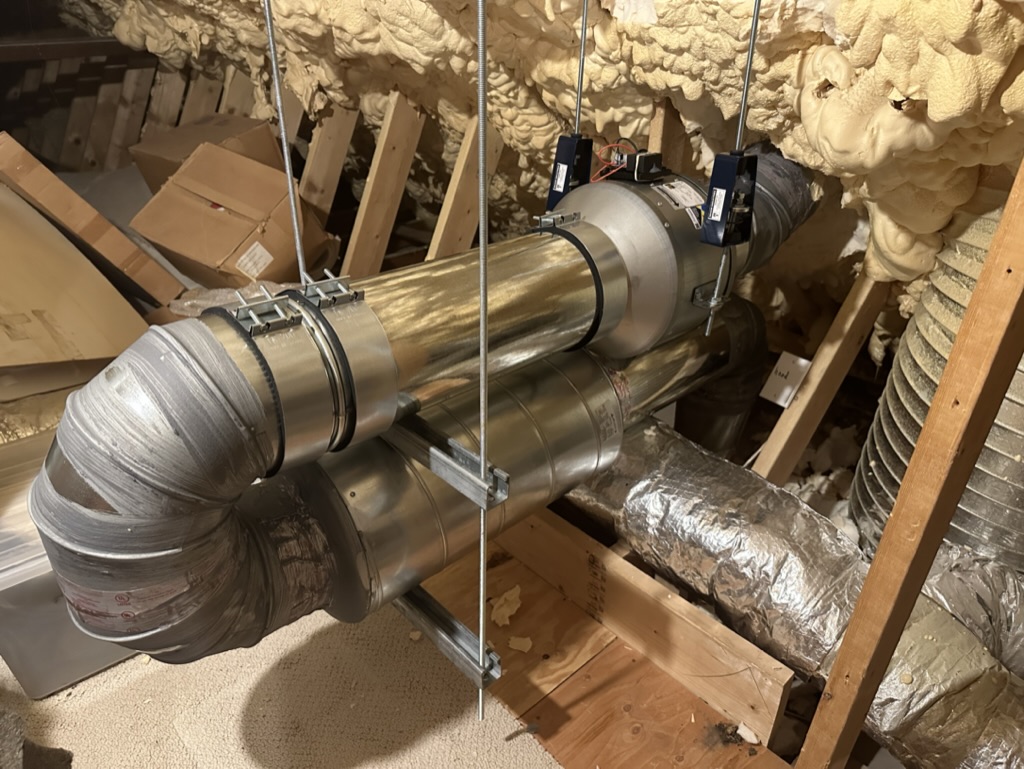
And this is the new remote fan, which includes a sound damper. It's bigger, but it's up in the attic working hard to convince everyone to use the hood.
For information on Indoor Air Quality:
- Indoor Air Quality (IAQ) 101 - An Introduction, and Starting a Wider Conversation
- A Rate It Green Content Guide to: Indoor Air Quality (IAQ)
Related content about sensors, and ventilation:
- Automatic Bath Fan Sensors Reduce Humidity, Pollutants, and Odors
- Reactive Sensors and Controls for Home Ventilation, Featuring Corbett Lunsford
- Customized Switches and Sensors for Indoor Air Quality || Swidget
- Walking and Talking about Fresh Air and Ventilation with Green Building Expert Matt Hoots - and Oliver
For more information on natural gas combustion in homes:
For more information on noise levels:
Roy R // Engineer working on living a sustainable life
We did the same thing with a couple of kitchen exhaust hoods - removed the internal fan and replaced it with an in-line fan downstream. I also lowered the flow down to 300 CFM for these induction stoves, not nearly so much exhaust is required. Much quieter.
Please be kind and respectful!
Please make sure to be respectful of the organizations and companies, and other Rate It Green members that make up our community. We welcome praise and advice and even criticism but all posted content and ratings should be constructive in nature. For guidance on what constitutes suitable content on the Rate It Green site, please refer to the User Agreement and Site Rules.
The opinions, comments, ratings and all content posted by member on the Rate It Green website are the comments and opinions of the individual members who posts them only and do not necessarily reflect the views or policies or policies of Rate It Green. Rate It Green Team Members will monitor posted content for unsuitable content, but we also ask for the participation of community members in helping to keep the site a comfortable and open public forum of ideas. Please email all questions and concerns to admin@rateitgreen.com


